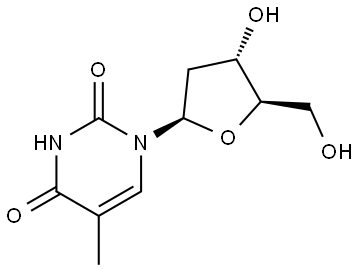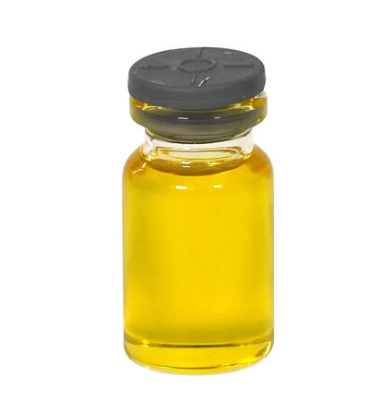Thymidine: A Key Nucleoside in DNA Structure and Function
Introduction
Thymidine, or deoxythymidine, is one of the four nucleosides constituting DNA. Its unique structure and properties make it indispensable in the formation and stabilization of the DNA double helix. This substance consists of the pyrimidine base thymine attached to a deoxyribose sugar. The unique consistant distinguishes it from other nucleosides like adenosine, guanosine, and cytidine. It is an integral part of DNA. Therefore, thymidine is crucial for genetic replication, repair, and transcription processes[1].
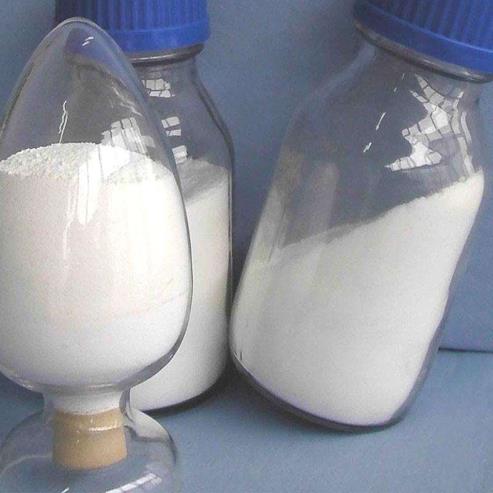
Thymidine is a pyrimidine 2'-deoxyribonucleoside having thymine as the nucleobase. It has a role as a metabolite, a human metabolite, an Escherichia coli metabolite and a mouse metabolite. It is functionally related to a thymine. It is an enantiomer of a telbivudine.
Uses
Thymidine, a specific DNA precursor, is taken up by cells during the DNA synthetic phase, which precedes the onset of visible mitosis and is subsequently retained in the nucleus. Nuclei that have taken up labelled thymidine can thus be detected autoradiographically. The label becomes progressively weaker after each subsequent division. Thus, heavily labelled nuclei belong to cells that have been ‘born’ about the time of injection of 3H- thymidine, while more weakly labelled nuclei belong, in general, to cells that have undergone subsequent divisions[1].
The radioactive nucleoside tritiated thymidine was first used to label DNA synthesis until methods that eliminated the use of radioactivity were developed. Thymidine analogs such as 5-bromo-2′-deoxyuridine are commonly used in place of radioactive thymidine. Using a thymidine analog to label DNA synthesis is reliable and accurate. It requires the injection of the analog into an animal or incubation in cells or tissue in culture, where it is integrated into replicating DNA. Thymidine integration is largely permanent, present for the cell's life, which allows one to see the fate of the new cell at later time points. Radioactive thymidine is observed using autoradiography, which measures radioactive decay. Nonradioactive thymidine analogs can be visualized using reporters such as fluorescent antibodies. One of the drawbacks is that incorporation of the thymidine analog can result in detrimental effects on cell-cycle progression and growth.
[1] Topolcan O, Holubec Jr L. The role of thymidine kinase in cancer diseases[J]. Expert opinion on medical diagnostics, 2008, 2(2): 129-141.
[2] Thymidine - an overview | ScienceDirect Topics https://www.sciencedirect.com/topics/neuroscience/thymidine
References:
[1] ONDREJ TOPOLCAN L H. The role of thymidine kinase in cancer diseases.[J]. Expert opinion on medical diagnostics, 2008, 2 2. DOI:10.1517/17530059.2.2.129.[2] DANIEL S. MARTIN MD. An overview of thymidine[J]. Cancer, 1980, 45 S5: fmi, 1041-1272. DOI:10.1002/1097-0142(19800315)45:5+<1117::AID-CNCR2820451316>3.0.CO;2-S.
See also
Lastest Price from Thymidine manufacturers
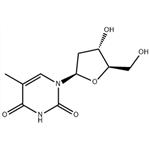
US $99.00/Kg2025-10-13
- CAS:
- 50-89-5
- Min. Order:
- 1Kg
- Purity:
- 98%
- Supply Ability:
- 20Ton
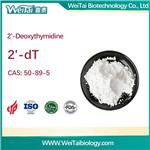
US $0.00-0.00/kg2025-08-19
- CAS:
- 50-89-5
- Min. Order:
- 1kg
- Purity:
- 99%HPLC
- Supply Ability:
- 1000T
